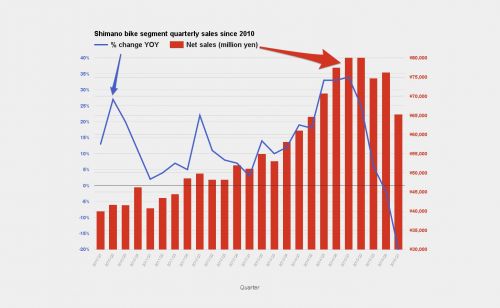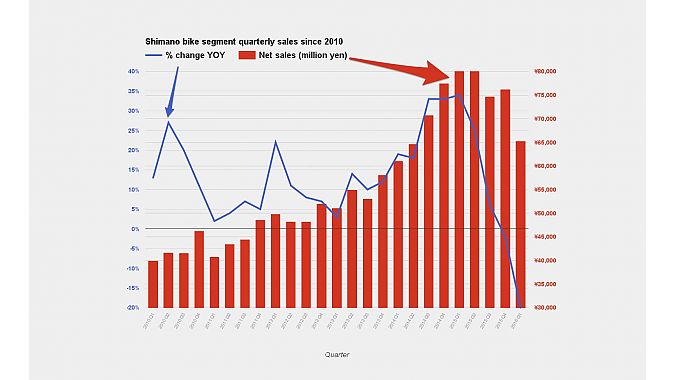OSAKA, Japan (BRAIN) — Shimano on Tuesday reported its second consecutive quarterly year-over-year revenue decline in its bike segment, as it announced that net sales were down 20 percent in the first quarter of 2016. The company's operating income also was down, 30.7 percent. Its bike segment had also reported a quarterly decline of 2 percent in the final quarter of 2015, compared to the same quarter of the prior year.
Shimano's net sales in all segments in the first quarter were 82,169 million yen ($738 million), down from 98,000 million yen in the same period last year. Subracting Shimano's fishing and other divisions, the company's bike sales were down from 81,940 million yen last year to 65,282 million yen this year.
In a statement, the company alluded to high inventory levels of bicycles at its North American and European distributors, soft Japanese and Chinese markets, an uncertain U.S. economy, lackluster South American sales, and European terrorism, without directly blaming any of them for its sales decline.
"Both Europe and North America had a mild winter and retail sales in the first quarter of fiscal year 2016 were buoyant. Distributor inventories of bicycles in Europe remained at an appropriate level. In North America, distributor inventories, which have been accumulating relatively high, are likely to adjust to appropriate levels within the first half of fiscal year 2016.
"In China, where growth in retail sales of sports bicycles slowed in the previous year, distributor inventories remained high, but adjustment to an appropriate level is gradually underway. As regards other emerging markets, whereas retail sales in Southeast Asia remained robust, those in South America were lackluster because of the economic slowdown and weak currencies.
"In the Japanese market, although sales of sports bicycles maintained more or less the same level, distributor inventories were somewhat high. Retail sales of community bicycles remained weak, affected by the impact of price increases resulting from the depreciation of the yen since 2015."






